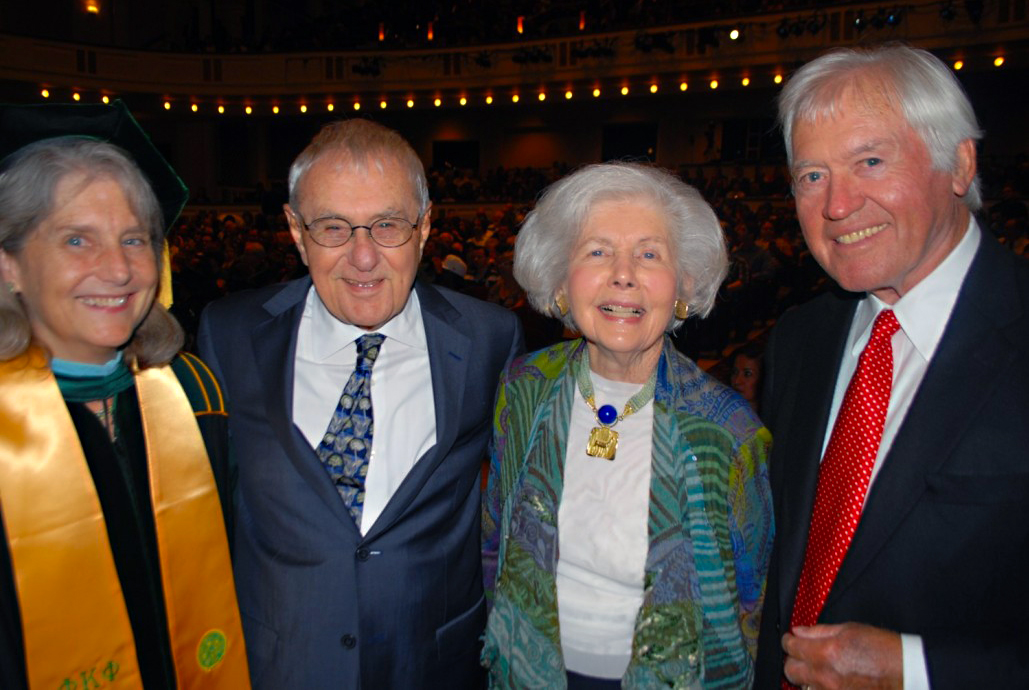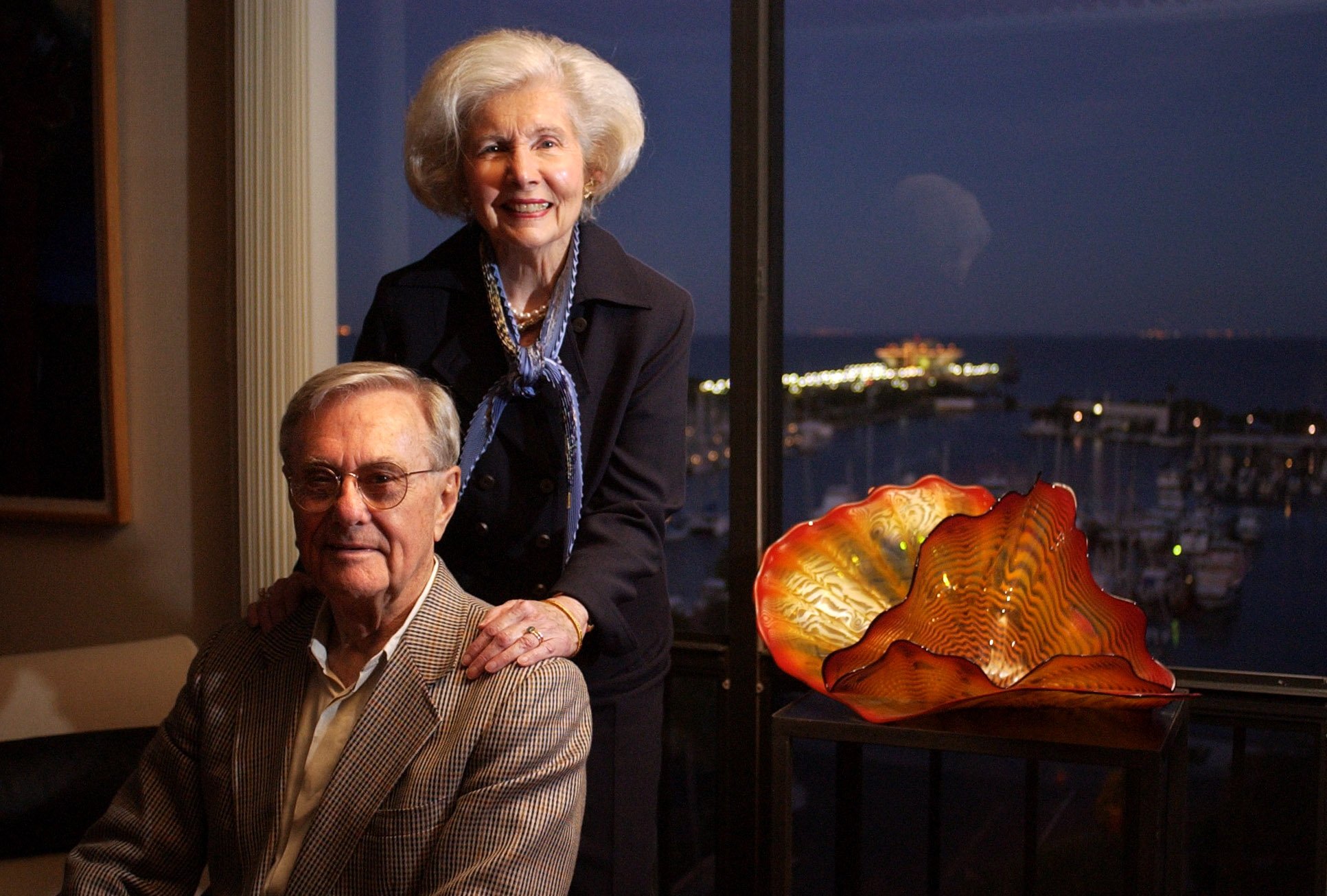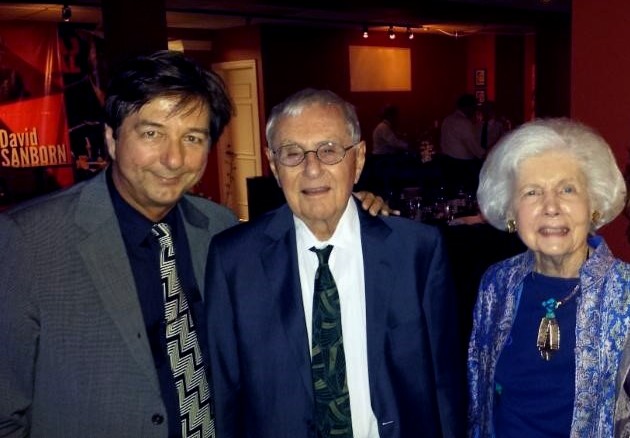“The Benefactors” is a new series from duPont REGISTRY Tampa Bay, telling the stories of men and women whose thoughtful philanthropy has enriched the Tampa Bay community in countless ways.
As a guy who has lived and worked on both sides of Tampa Bay, I’m often asked how sleepy old St. Petersburg awakened to become a vibrant city of the arts.
The answer is an easy one: the generation of philanthropists who made their money in the 1950s and ’60s and invested it in arts and culture. The Museum of Fine Arts, American Stage, the Mahaffey Theater, the Morean Arts Center, the Dalì Museum and so many more institutions benefited from their vision and generosity.
There’s no better example than with two of the founders of The Palladium Theater — Bill and Hazel Hough. We lost Hazel this past August at the age of 92.
While the Houghs funded and endowed countless cultural institutions — including the Hazel Hough Wing of St. Pete’s Museum of Fine Arts — the story of their involvement with the Palladium, where I’ve been executive director since 2007, is a perfect example of their vision.
Between the 1960s and the 1980s, performing arts centers sprang up around the country — three in the Tampa Bay area alone. What communities quickly discovered was that, while these cultural palaces worked well for Broadway roadshows, touring orchestras, and pop music stars, they could be deadly for local theater and dance artists. The high rent and union stage hands at the big centers — requirements for touring shows — were just too much for local companies.
The Houghs realized this early and went looking for a place that could serve as an affordable professional venue for the community.
It was Hazel and Mary Wyatt Allen, another St. Pete visionary, who first walked into what was then a Christian Science church on Fifth Avenue North and reported back to Bill that they had found the perfect building for their community venue. The 1925 church was beautiful and historic, but more importantly, instead of pews there were theater seats. Bill and Hazel made the case to other friends who invested in the non-profit project. I don’t know how much they invested, but turning a church into a performing arts venue and running it year-round with full-time staff costs millions. The Palladium’s 831-seat mainstage was named Hough Hall in recognition of their generosity.
But the Houghs didn’t just give money. After the Palladium opened in 1998, Bill and Hazel were regular audience members. Bill’s health has kept him away for the past few years, but Hazel remained a regular, her last visit coming in late May when she sat in her favorite seat at the top of the center stairs for a Florida Orchestra concert. Even though getting to that seat was a challenge for her weakened legs, she was smiling broadly that night, especially after seeing that the theater was full.
In the Palladium’s first eight years, she liked to tell me, she and Bill were often called in to bolster an otherwise small audience.
We haven’t had to call Bill and Hazel to fill seats for a long time.

“Body and Soul”
I met Bill and Hazel before I took the job running the Palladium. My journalism professor and mentor, Don Baldwin (a former St. Petersburg Times editor), and his wife Pat, had included my wife and me in dinner parties at their home, and the Houghs were among the guests. Hazel loved the songs of the Great American Songbook — she was a good singer herself — and it was fun playing and singing for her.
At those dinners, when I was lucky enough to sit beside her, I learned that Hazel grew up in Fort Myers in the 1930s, married Bill, a guy she met on a blind date arranged by relatives, in 1951, and raised three children in St. Petersburg, Robb, Susan and Helen. As her husband’s bond business — William R. Hough & Co. — flourished, the couple shared the wealth with their community, particularly local arts organizations. And Hazel was no dilettante who wrote a check but never left the country club; she showed up at concerts, plays, recitals, art openings, talks.
Hazel’s love of the arts went back to her youth, said her daughter, Susan Hough Henry. She studied classical piano and even sang in a trio called the Swing Triplets.
“But when the Museum of Fine arts opened in the early 1960s,” Susan said, “she immersed herself in everything it had to offer. She became a member of the first docent class, setting the course for her taking leadership in the educational component of the museum. Her joy was seeing children who had never been in an art museum understand and appreciate art for the first time.”
I was asked to coordinate music for the opening of the Hazel Hough Wing at the Museum of Fine Arts soon after taking my job at the Palladium. I made sure there was a grand piano available and asked Hazel what song she wanted to hear.
“I love ‘Body and Soul,’” she told me. I learned it — and let me tell you, it’s not an easy song to do — and made sure she was at the piano when I played it.
Hazel, as always, was smiling and complimentary. She brought the best old-school Southern charm to her life. And she shared that with all the people who were lucky enough to cross her path.
A philanthropic spirit
Other arts and development executives have similar stories.
“Mrs. Hough was deeply involved with the Museum of Fine Arts in so many ways,” Kristen Shepard, the executive director of the MFA, told me. “I had lunch with her a few times a year and treasured those times. She was intellectually curious, loved seeing what we were working on, and was enthusiastic about everything from contemporary art to our ancient mosaic project.
“The Houghs’ generosity to the museum over the decades made our growth possible, both in terms of the physical building and the strength of our curatorial department, which they supported through an endowment which allowed us to create a position for a curator of contemporary art. Both Mrs. and Mr. Hough served on the MFA’s Board of Trustees and were members of our Collectors Circle.”
Hazel, Kristen said, “led by example in supporting the museum and the entire arts community.”
Jesse Turtle, a longtime development executive who now heads the St. Petersburg College Foundation, recalled how in 2007 the Houghs gifted St. Petersburg College with the Palladium and created an endowment to support the theater for the long term.
“Many years after Hazel and Bill gifted the Palladium to St. Petersburg College, Hazel still spoke about the venue with pride and its importance in the community. She always thought of others first, and her philanthropic spirit inspires others to give back to better our community.”
After coming on board at the Palladium, I met with Bill and Hazel regularly to keep them up with the operation of the theater. The Hough Family Foundation continued to be the Palladium’s largest annual supporter.
We’ve achieved a lot during the past 12 years, but my proudest moment was when Hazel told me that of all the things she and Bill had supported, the Palladium was the closest to their heart.
“And you’ve made it into the place we always hoped it would be,” she said.
And then she smiled, and her smile lit up the room.
The Palladium’s 2019-20 season is filled with classical music, Broadway singers and other shows Hazel would have loved. The season is dedicated to her memory.





